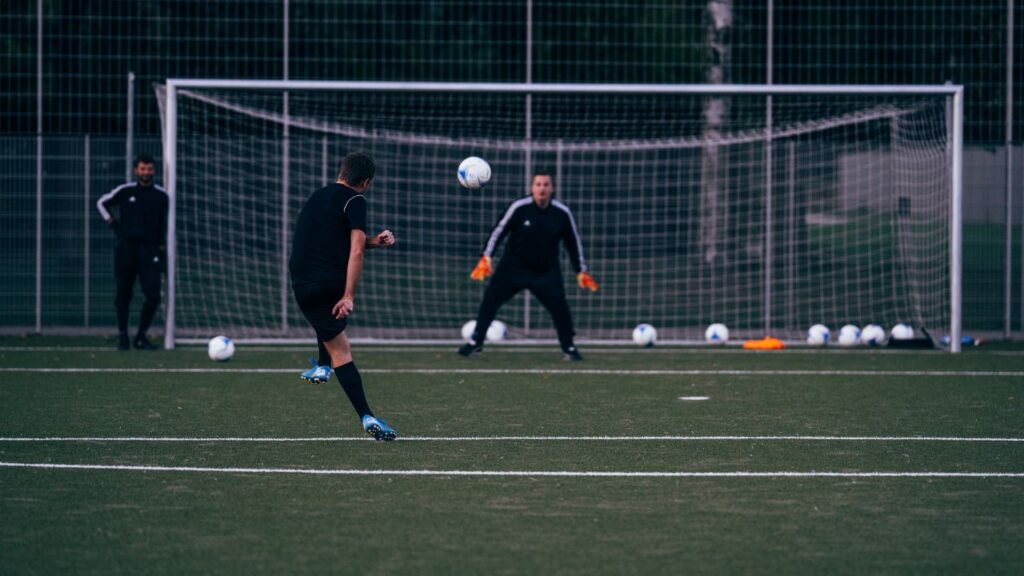When the roar of the crowd swells and every pass, tackle, and goal feels like the plot twist in the world’s greatest drama, football reveals its raw, electrifying heartbeat. Beneath the surface of every nail-biting match lies a world of tactics and strategic chess moves shaping the outcome long before the whistle blows. In 2025, as global football continues its meteoric rise across continents, understanding tactical analysis isn’t just for managers or pundits — it’s the gateway for all fans who crave the granular detail behind the beautiful game’s exhilarating chaos.
Modern football demands a blend of creativity, precision, and relentless planning. Tactics have evolved from rigid formations to flexible, dynamic systems that respond to every shift on the pitch. From the Premier League’s relentless pace to the strategic battles of the UEFA Champions League, diving into tactical nuances unlocks a richer appreciation of the game—where each player’s movement composes an intricate symphony of attack and defense. It’s about more than numbers or diagrams; it’s about spotting the genius behind a blitzing counter, the bravery in a compact defensive block, or the heartbreak in a last-minute tactical overhaul that backfires.
Whether you’re a newbie marveling at the chase of a ball or a seasoned fan enthralled by legendary rivalries, tactical analysis bridges the divide. It unwraps the complex decisions coaches like Thomas Frank and Antonio Conte make, highlights standout players thriving under unique systems—think Mohamed Salah’s phenomenal 29-goal campaign—and shines a spotlight on the underdog teams changing the game. With tools ranging from video analysis to GPS data, the modern football fan has never had better insight into the game’s strategic heartbeat.
From Nike-clad wingers blazing past defenders to Adidas-sporting midfield maestros dictating tempo, and even players breaking new ground with Puma or New Balance gear, the sport’s blend of athleticism and intellect pushes boundaries. This article dives deep into the pulsating core of tactical football in 2025: how analysis shapes, disrupts, and elevates every moment on the pitch.

Unlocking Football Tactics: Key Concepts Every Fan Needs to Know
Understanding tactical concepts transforms watching football from passive viewing to an active, adrenaline-charged experience. At its core, tactical analysis digs into how teams arrange themselves and react to the endless, fluid battles on the field.
Imagine formations as chess pieces, not just static lines on paper, but living, breathing units. Concretely, formations like the classic 4-4-2 or the versatile 3-5-2 define player positioning, but in 2025, these shapes evolve mid-game through fluid movements, rotations, and overloads—strategies perfected by top coaches such as Luis Enrique and Arne Slot. Overloading in build-up phases means concentrating players in a particular zone to create numerical superiority, pulling opponents out of shape, then exploiting space—a tactic now common among teams like PSG and Liverpool.
- Possession: More than keeping the ball, possession trains teams to control tempo and create attack avenues. The rise of possession-based football relies on intricate passing and intelligent off-ball runs, showcased by teams dominating UEFA and Premier League styles today.
- Transitions: The heartbeat of modern football. The shift from defense to attack, or vice versa, can decide matches in seconds. Tactical analysis reveals how teams like San Diego FC utilize rapid counterattacks or maintain defensive solidity when possession is lost.
- Pressing: Pressure on the opponent to hurriedly concede possession. “Trigger-based pressing,” for example, pioneered by Antonio Conte at Napoli, means pressing only under specific cues, conserving energy while disrupting opposition rhythm.
- Space Management: Understanding where space exists or can be created is key. Midfield orchestration by playmakers like Thiago Almada exploits tight corridors with lightning-quick maneuvers, making them the difference-makers in congested areas.
Beyond these core ideas, tactical analysis incorporates team shape during different phases, player roles in set-pieces, and how weak or strong sides adapt their game plan. Technology such as GPS trackers and video analysis tools pin down metrics like player speed, heat maps, and passing accuracy, giving coaches crucial decision-making ammunition. This holistic view isn’t just for the elite; it’s revolutionizing how everyday fans connect with football’s tactical heartbeat.
| Key Tactical Concept | Definition | Example in 2025 Football |
|---|---|---|
| Formation | Basic team structure, e.g. 4-3-3, 3-5-2 | AS Roma’s evolving system under Gasperini mixing defensive solidity with attack |
| Possession | Maintaining ball control to dictate play | Manchester City’s dominant midfield strategy |
| Pressing | Forcing mistakes through aggressive defense | Napoli’s trigger-based pressing by Antonio Conte |
| Transitions | Switching quickly from attack to defense or vice versa | MLS newcomers San Diego FC’s rapid counters in Western Conference |
| Overload | Concentration of players in a zone to outnumber opponents | Liverpool and PSG’s build-up play tactics |
How Tactical Analysis Elevates Player Roles and Team Success
The intricate dance of player positions also leads to a richer understanding of individual contributions. This is not just about stats, but identifying how stars like Mohamed Salah or rising talents such as Ibrahim Maza influence games tactically. Coaches use video breakdowns and data to tailor player instructions, optimizing roles to the team’s philosophy.
For example, tactical discipline in corner defense—highlighted by Brentford in the recent season—demonstrates how detailed positional awareness and coordination can neutralize set-piece threats. In 2025, organizations such as RKT Football provide analysis highlighting these subtleties, arming fans with insights to appreciate how corners, transitions, or pressing dictate outcomes. With every player equipped by brands like New Balance or Reebok, combining comfort with agility, one can see how kit technology supports these high-intensity roles.
Applying Tactical Analysis: From Coaches’ Blueprints to Fans’ Insights
How do coaches turn complex tactical theory into match-winning reality? The process begins long before kickoff, through rigorous study and preparation. Tactical analysis allows the identification of team strengths, weaknesses, and opponent vulnerabilities that shape game plans.
- Pre-match Scouting: Identifying opponents’ tendencies and key players helps craft strategies that exploit their weak points. For instance, studying data from the 2024-2025 UEFA Nations League finals reveals how Portugal adjusted to Spain’s possession dominance to clinch the title on penalties.
- In-game Adjustments: Tactical flexibility is prized. When Tottenham Hotspur struggled during the 2025 season, Head Coach Thomas Frank introduced new pressing dynamics that revitalized their play.
- Post-match Analysis: Reviewing video and stats pinpoints what worked and what must improve, not only tactically but mentally, which can be just as decisive under pressure.
Players internalize these insights, increasing understanding of roles and boosting team cohesion. For the fan, this opens doors to smarter viewing, fueling discussions about strategies and supporting evidence-based debates in forums and social networks. As football’s digital ecosystem grows, sites like RKT Football empower fans with expert tactical insights blended with emotion and storytelling.
| Application Phase | Description | Real-World Example |
|---|---|---|
| Pre-match | Opponent scouting and strategic planning | Portugal’s adjustment against Spain in Nations League 2024/2025 |
| In-game | Dynamic tactical changes based on match flow | Tottenham’s adoption of new pressing triggers under Thomas Frank |
| Post-match | Video and data evaluation for continuous improvement | AS Roma’s season analysis leading to tactical tweaks for next campaign |
Cutting-Edge Tools Transforming Tactical Analysis in 2025 Football
The technology revolution in football analysis is as big a game-changer as a Haaland goal in a title decider. The convergence of video technology, data analytics, and wearable sensors equips teams with a tactical X-ray of their performance.
Coaches and analysts now leverage a combination of tools:
- Video Analysis Software: Platforms compile game footage with tagging systems to dissect every pass, dribble, and defensive move.
- GPS and Movement Sensors: Track players’ speeds, positioning, and distances covered, enabling precise fitness and tactical adjustments.
- Statistical Data Models: Metrics like Expected Goals (xG), passing networks, and pressing intensity provide objective layers to assessments.
This precise scrutiny not only spotlights areas for improvement but also captures the intangibles: leadership on the field, shifts in momentum, and players’ responses to escalating pressure. Take PSG and Liverpool’s innovative use of overload tactics fueled by real-time analytics, combining traditional football intuition with cutting-edge tech.
| Tool | Purpose | Example Use Case |
|---|---|---|
| Video Analysis | Detailed breakdown of match phases and player movements | Evaluating Salah’s positioning to create goal-scoring opportunities |
| GPS Tracking | Monitoring physical performance and spatial positioning | Measuring defensive runs by Florentino Luís at Benfica |
| Statistical Models | Quantifying tactical efficiency using advanced metrics | Assessing corner defense effectiveness at Brentford |
The Human Factor in Tech-Driven Tactical Analysis
Even the best technology can’t replace the human eye tuned to the spirit and emotion woven into football. The art of tactical analysis lies in interpreting data and footage with context—knowing when a packed defense is a stroke of genius or a sign of desperation. Coaches use these insights to boost player confidence and communication, realizing embedded trust often prevails over raw data in crunch moments.
It’s this marriage of analysis and emotion that makes following football so enthralling in 2025. As new brands and tech giants push limits—from Puma’s cutting-edge kits to Asics and Brooks powering athlete conditioning—there’s no shortage of innovation on the pitch and behind the scenes.

Global and Local: Football Tactics In A Connected World
Football’s tactical evolution is not just a European affair. The sport’s explosive growth in leagues across the Americas, Asia, and Africa brings fresh ideas and styles into the global conversation, with clubs blending philosophies from Nike-adorned stars in the MLS to Adidas-clad talents emerging from African academies. This cross-pollination means tactical analysis needs to be versatile and inclusive, capturing unique traits from different football cultures.
Take the rapid ascent of San Diego FC in MLS, a team taking the Western Conference by storm through aggressive pressing and swift transitions—proof that tactical innovation can flourish anywhere. Or how local legends and new heroes shape rivalries that feel like epic tales straight out of the RKT Football archives.
The future is bright for football fans who embrace tactical understanding. As leagues continue to adapt with new coaching philosophies, tactical tools, and empowering athlete brands like Reebok, Saucony, and Hoka One One, matches become electrifying blends of skill and strategy. To keep pace with these rapid changes, resources like RKT Football’s Global Growth coverage are indispensable.
| Region | Tactical Trend | Representative Club / Player | Impact on Global Football |
|---|---|---|---|
| Europe | Positional play & overload strategy | PSG, Liverpool | Setting benchmark for tactical complexity in top leagues |
| North America | High-press & rapid transitions | San Diego FC | Injecting pace and aggressiveness into MLS |
| South America | Technical build-up & individual creativity | Thiago Almada, River Plate talents | Fueling flair and unpredictable moments in global matches |
| Africa | Physicality combined with tactical discipline | African national stars emerging from local leagues | Broadening the tactical landscape with diverse player profiles |
Frequently Asked Questions About Football Tactical Analysis
- What is the main goal of tactical analysis in football? Tactical analysis aims to understand how teams organize and perform on the pitch, identifying strengths, weaknesses, and strategies to optimize performance.
- How do coaches use data from tactical analysis? Coaches study video, GPS, and statistics to plan match strategies, make real-time adjustments, and improve player roles and team effectiveness.
- Can tactical analysis be understood by casual fans? Absolutely. With clear explanations, animated visuals, and relatable examples, tactical analysis enhances all fans’ experience, from beginners to experts.
- What are some key tactical concepts to watch during matches? Formations, pressing, transitions, possession, and overload tactics are core elements that shape the flow and outcome of matches.
- How has technology changed tactical analysis recently? Advances like video breakdown software and player tracking sensors provide deeper, faster, and more accurate insights than ever before.
